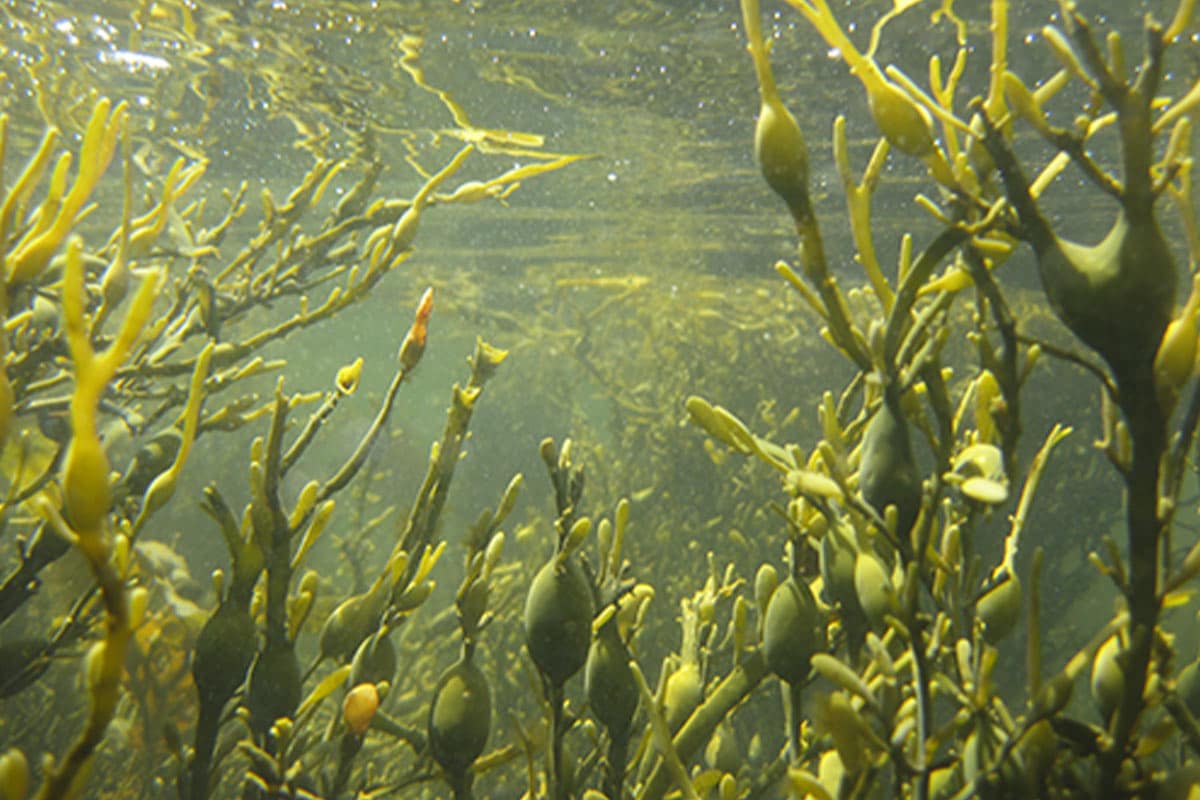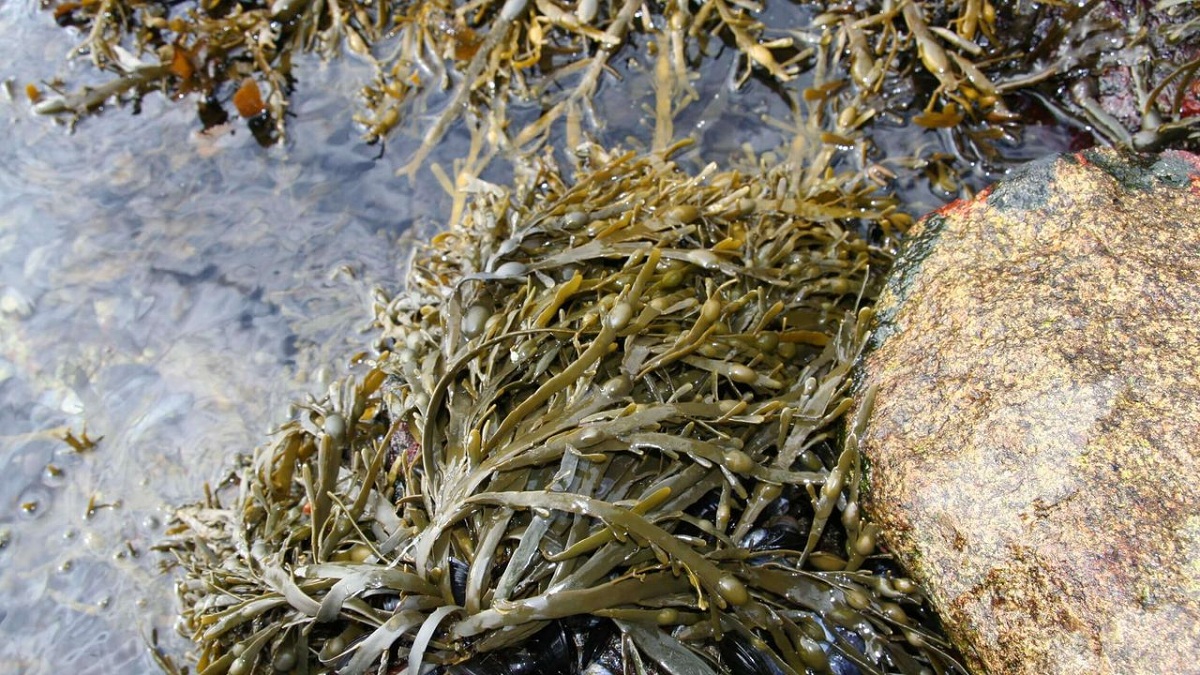
Today we are going to talk about a type of seaweed that has great utilities in the agricultural world. Its about Ascophyllum nodosum. It is a fairly common type of brown league species that belongs to the Fucaceae family. It is the only species that exists in the genus Ascophyllum and comes from the North Atlantic Ocean. Its common name is rock algae or Norwegian kelp. With this algae many fertilizers are made that are used for agriculture.
In this article we are going to tell you all the characteristics, ecology and uses of the Ascophyllum nodosum.
Key features

This type of alga has longer branches and an irregular shape. It has air bladders that are egg-shaped and are set in series at regular intervals. These air bladders are used to survive in aquatic environments. The frond reach 2 meters in length and is attached to the rocks through a rhizoid. This algae is olive green and brown in color, so it is classified within the group of brown algae.
El Ascophyllum nodosum It is found mainly in the rocky areas of the coastline. It can become the dominant species in the littoral zone thanks to its ability to attach itself to rocks quite easily. This species of algae is found in a wide variety of coastal habitats. We can find a large number of copies of Ascophyllum nodosum in good estuaries some coastal areas that are more exposed, although it is rarer.
It usually grows to a very slow rate of only 0.5% of its size per day. If there are no environmental impacts near the place of growth of this alga it can live between 10 and 15 years. They normally share an ecosystem with some algae of the genus Fucus such as the fucus vesiculosus y fucus serratus. One of the fundamental aspects of the distribution area of this alga is due to the salinity of the water. You have to know that its distribution is limited by the salinity of the water, although it is also limited by other variables. These variables that limit growth and development by ecosystems are the following: wave exposure, desiccation, temperature and general stress.
Having these inconveniences to be able to expand its land, it can take almost 5 years to be fertile. It has a utility in ecosystems and that is that they act as chemical defenses against the herbivorous marine snail.
Ascophyllum nodosum in the agriculture

We know that the agricultural sector has evolved to increase crop yields. Much of these yields are due to the use of plants that favor the well-being of others. Thanks to the concerns that exist in the industry, they begin to investigate and study natural means that can offer a stimulus to the growth of plants and protection against possible climatic adversities. There are different improvements that have been applied to current crops in order to protect them against adversity and continue to increase agricultural yield. Through these concerns is like Work began with seaweed to increase agricultural yield.
Among the marine areas most used in agriculture, the Ascophyllum nodosum. And it is that this life has some characteristics that benefit the growth of crops. Since they suffer greater stress in their natural habitat throughout the year than the rest of other outings, they have a natural survival system that generates a high content of bioactive people. These bioactive agents they are quite useful if used in agriculture. The agents are created because these algae spend most of their time submerged in water and the other half in the open air. This contrast between the characteristics of the ecosystem where they live causes them to develop these bioactive agents.
Thanks to species like Ascophyllum nodosum New concepts have originated in the agricultural sector such as biostimulant products. To the producer biostimulants are those that help to stimulate the growth and development of crops in a natural way. These products have a wide range of use as far as cultivation is concerned. Most of the biostimulants used in the market have a concentration of algae to a greater or lesser extent. Most of the algae that used for these biostimulants belong to this species.
In addition, to improve the yield of the crops, they are associated with other nutritional elements that are responsible for providing the benefits to the development of the crops. These biostimulants have begun to be used in the agricultural sector and, having great success, it is possible that they will be developed and will remain. They offer the farmer an unbeatable solution to be able to have an optimal development of the crops.
Advantages of applying the Ascophyllum nodosum in the agriculture

Let's see now why it has become so well known in agriculture to use this type of algae for the generation of biostimulant products. Among the advantages we have of the application of biostimulants with extracts of algae from Ascophyllum nodosum we have the following:
- Help to stimulate root growth and vegetative growth of crops.
- They improve the exchange of nutrients that exists between the root and the soil.
- Crops that suffer from continuous stress due to adverse weather conditions are being recovered.
- Increase the ability of roots to absorb nutrients and their translocation.
- Improve the entire root system of plants.
- It is an enhancer for the evolution of crops.
- It increases the number of fruits that a plant is capable of generating and also improves its quality.
- Reduces the absorption of sodium by the plant.
With all these advantages, the biostimulants found in this type of algae have become totally necessary to improve the root and foliar system of all crops, improving crops both in quantity and quality.
I hope that with this information you can learn more about the different uses and characteristics of algae. Ascophyllum nodosum.